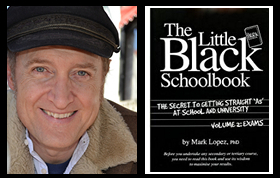Dr Mark’s The Meaning in a Nutshell
Rob Sitch, Santo Cilauro, Tom Gleisner and Jane Kennedy (directors) Frontline (television series) (1994, 1995, 1997)
Series 1 (1994) episodes: ‘The desert angel’, ‘The siege’, and ‘We ain’t got dames’
Produced, directed and written by Rob Sitch, Santo Cilauro, Tom Gleisner and Jane Kennedy, the television series Frontline (1994, 1995, 1997) is a satirical exposé of commercial current affairs television programmes. Frontline uses humour and parody to reveal to audiences familiar with these programmes that current affairs television is not what it claims or seems to be. Frontline presents itself as taking its audience behind the scenes to reveal what really happens in the making of commercial current affairs television. Instead of providing honest, accurate, trustworthy news reporting, it is shown to be a commercial venture that is sensationalist, manipulative and dishonest and these programmes should not be treated as news but rather as something less. These programmes also exhibit low ethical standards in their journalism and audiences cannot rely on them for a fair discussion of the issues.
In addition, as commercial enterprises, the ultimate goal of these current affairs programmes is the high ratings that allow for the advertising spaces to be sold at a higher rate, thereby making the network more profitable. The pursuit of ratings is paramount. This leads to the choice of stories to target particular demographics, like women, to cater to the needs of advertisers. For example, producers will scan tabloid print media to find ideas for news stories for the programme. This attitude can lead to a trivialisation of news content and a trivialisation of the way that political stories and some politicians are handled. Consequently, these commercial current affairs programmes can deliberately overlook covering serious social issues, like the exploitation of female migrant labour in the clothing industry, in favour of lighter content that is more uplifting, like a celebration of Australian fashion. In this manner, commercial current affairs television is failing in its role as part of the news media that can put serious issues on the agenda in a democratic political system.
A more devious side to commercial current affairs programmes comes from the efforts to get a ‘scoop’ over rival networks. This can motivate the producers and reporters to dish up ‘dirt’ for the amusement of the television audience, blackening the reputation of an individual with scant regard for the consequences for that individual. They can also run ‘spoilers’ to undermine the credibility of the rival network’s coverage of a story rather than seek the truth. The media can sanctify or vilify an individual depending on how they want to use them in the story, regardless of what they are like in real life. Furthermore, good looking people are considered to be better media fodder and are more likely to get positive coverage or any coverage at all. The most manipulative form of reporting is the staging of re-enactments of events, like crimes. This can happen when there is a lack of visual material available. However, these re-enactments give the producers the opportunity to dramatise the story in a manner of their choosing to heighten the emotional response from the audience.
In addition, certain stories are treated by producers and reporters as set pieces that are covered by following a strict formula, which can force square pegs into round holes. Rather than seek to understand the story on its own merits, this approach can see a focus placed on casting those involved in the story into clichéd roles and a preference for lurid details and deliberately manipulative emotional content. If journalists resort to unethical behaviour to get a high-rating story, they are rewarded rather than punished.
In addition, Frontline reveals commercial current affairs television to be more like show business than serous journalism. The reporter in front of the camera is the star who takes the credit for all the work done behind the scenes by the producers, who remain anonymous and unacknowledged. The journalists in front of the cameras are practised at adopting dramatic poses and facial expressions that add to the drama of a story or even create drama that was not originally there. The journalists and producers will even interfere with the story, their presence or involvement changing the nature of the event by changing the behaviour of the people involved. The biggest star is the news anchor. Publicists are employed to cultivate his public image. He is paid much more than the other journalists even though he is an intellectual lightweight and a poor quality journalist.
The slick and impressive promotional material that advertises commercial current affairs television is revealed to bear little resemblance to the truth and is shown to reveal more about how this industry likes to perceive itself than about what the industry is actually like.
Student resources by Dr Mark Lopez
© Mark Lopez 2021 All RIGHTS RESERVED
The purpose of the concise notes of Dr Mark’s The Meaning in a Nutshell is to provide much needed help to students seeking to unlock the meaning of the texts with which they have to deal. (More elaborate notes are provided in lessons as part of my private tutoring business.)
Subject: Frontline meaning, Frontline themes, Frontline analysis, Frontline notes
